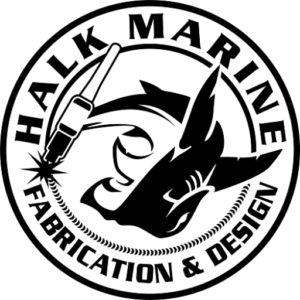How to fix porpoising on small boats

Porpoising on small planing hull boats is a common issue plaguing boaters. Here’s some suggestions on how to cure it.
What is porpoising and what causes it?
Porpoising means the bow of your boat bounces at higher speeds. It’s caused by a dynamic instability between the lifting forces on the hull and the thrust of the engine. While it can be predicted and prevented by careful hull design, weight balancing and engine height, small boat are particularly susceptible because small weight changes such as location of ice chests, passengers, or trolling motor batteries can cause relatively large changes in the center of gravity of the boat.
The bouncing will continue in a cycle, getting worse at certain speeds and trim angles until the operator slows down or adjusts trim. It’s a negative performance situation and can lead to injury on the boat, so let’s figure out how to fix it.
Can’t I just move weight forward to keep the bow down?
Moving weight forward to force the bow down can sometimes improve porpoising. The effect is similar to adding trim tabs or trimming the motor down. However, porpoising is not necessarily caused by having an LCG (longitudinal center of gravity) too far aft. In fact, most planing hulls perform better as you move the LCG aft. Moving batteries, ice chests, and fuel forward may help, but it could cost your performance and also affect your boats attitude at rest (e.g., your self bailing deck may not drain).
Solutions to Porpoising
These solutions are generally ranked in order of effectiveness, simplicity, and cost. It’s better to change things incrementally, starting with the easiest and cheapest solution.
Has your boat always porpoised?
If the porpoising condition just showed up, what was the last thing you changed? Did you repower to a bigger engine? Did you add more trolling motor batteries or ice chests? Is it possible your carrying water in the hull, bilge, or motor bracket? I would work backwards to identify the problem, then read below for options to fix it.
Trim Tabs
If your boat has trim tabs, use them actively! If it doesn’t, consider installing them. Some believe that trim tabs are a sign of bad hull design, but they aren’t! Trim tabs are critical, adjustable control-surfaces for boat just like they are for airplanes. A planing boat goes from displacement speed, through the transitional zone, to full planing—and benefits from controlling surfaces just the same as an airplane does.
Option A: Self-Leveling trim tabs (Cost: $100-$150)
Self-leveling trim tabs are an excellent solution for small boats less than 20 feet. Installation is easy and there’s no electric or hydraulic actuators to install or maintain.
Option B: Powered trim tabs (Cost: $100-$150)
Electric or hydraulic trim tabs work better for boats over 20 feet.
Adjust motor trim
Option A: Adjust trim underway. (Cost: $0)
While planing, adjust the motor trim to find optimal speed. The boat operator should be fine tuning the boat’s performance at different speeds and loading conditions using his motor trim or powered trim tabs. Trimming the motor down (negative direction) will force the bow down and trimming the motor up will cause the bow to rise. Experiment to find the best condition at certain speeds to minimize your porpoising problem.
Option B: Add a wedge. (Cost: <$100)
Some boat transoms are do not have enough rake angle to allow the motor to fully trim down. The outboard should be able to trim to around -14 to -16 degrees from vertical. If this is the case, a motor. Here’s a link to wedge’s by Bob’s Machine Shop.
Adjust motor height
Option A: Raise the engine mounting location. Cost – minimal.
Outboard motors have a series of 3-4 mounting holes so that you can adjust the height of the motor for best performance. Typically, the anti-cavitation plate is set even with the keel, but the boat performance can be improved by adjusting this up or down. Typically, heavier slower boats benefit from a lower motor position, while light high performance hulls tend to perform better with an raised motor height.
Option B: Install a jack plate. Cost – $500-$1000.
If you run out of adjustment with the engine’s mounting holes, or you want the ability to raise and lower the engine on the run, installing a manual or powered jack plate may be your solution.
Change propellers
Cost: $100-$300
Assuming you have the correct combination of propeller diameter and pitch, adjusting the number of blades and blade rake can improved performance at certain loading conditions and speeds. Experiment with different propellers and you may find your porpoising problem disappear.
Shift weight (cost: $0-$1000)
Changing the LCG of the boat is your next option. I would recommend using easily movable weights such as passengers, sand bags, or heavy icechests to find the optimal condition for your boat under your average running conditions. Once you determine the best condition, you can look at permanently moving heavy items such as trolling motor batteries, ice chests, fuel tanks, etc.
I hope this post helps anyone who is trying to troubleshoot their boat’s porpoising issues! If you have any questions or would like a personalized recommendation, feel free to contact me at jamie@halkmarine.com or 985-248-8866. I am a trained naval architect and I have experience fixing porpoising on many different types of boats.


